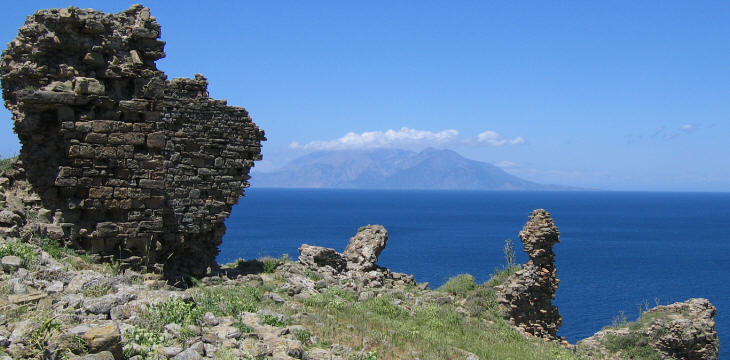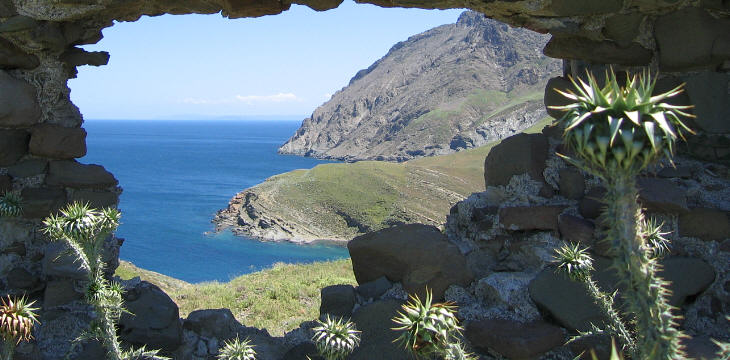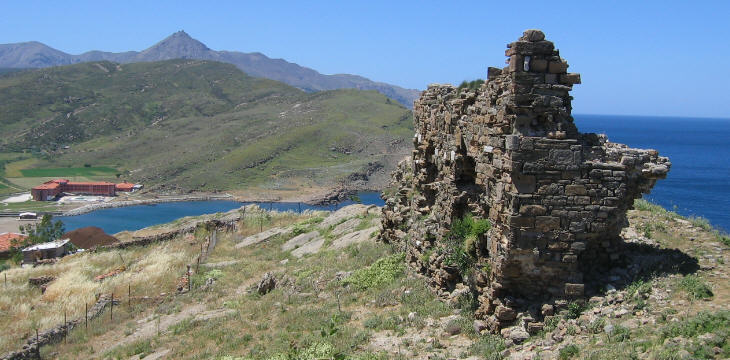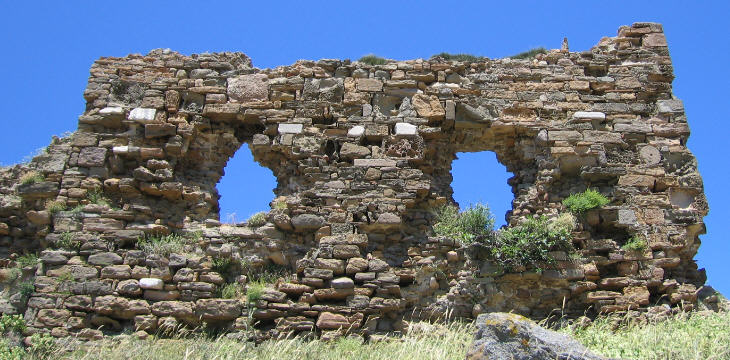  What's New! Detailed Sitemap All images © by Roberto Piperno, owner of the domain. Write to romapip@quipo.it. Text edited by Rosamie Moore. Page revised in January 2015. |
 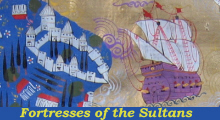 Imbro Imbro(detail of an Ottoman miniature showing Rumeli Kavagi, a lost fortress on the Bosporus) Between where Tenedos the surges lave, And rocky Imbrus breaks the rolling wave: There the great ruler of the azure round Stopp'd his swift chariot, and his steeds unbound, Fed with ambrosial herbage from his hand, And link'd their fetlocks with a golden band. Homer - Iliad - Book XIII - translation by Alexander Pope
Imbro (Gokceada) is a small island located in the north-western corner of the Aegean Sea close to the Gallipoli peninsula. Little is known about the island during the Greek and Roman periods: its name could be a reference to the availability of water: as a matter of fact during the fifth Ottoman-Venetian war (1645-69), the Venetians seized the island to supply their ships with its fresh water (the ships were anchored at the mouth of the Dardanelles). Because of its strategic position, Sultan Mehmet II in 1456, soon after having conquered Constantinople, seized Imbro. A small bay on the northern coast of the island served as landing site: it was protected by a castle built on the ruins of the ancient Greek acropolis. The castle has a commanding view over Samothrace, a small island dominated by a mountain which reaches 5,000 ft. and universally known for a statue portraying a winged victory (now at the Louvre in Paris - see it in this external link).
The castle was strengthened by the Ottomans after 1657, but not enough to prevent the Venetians from briefly seizing the island again in 1698 and from returning to the island in 1717 in the final days of the seventh (and last) Ottoman-Venetian war.
Imbro saw more fighting during the 1768-74 Ottoman-Russian war. Prince Vasili Orlov (or Orloff), was sent by Empress Catherine to the Aegean Sea to lead a revolt of the Greeks. He managed to conquer some Aegean islands including Imbro, which were eventually returned to the Ottomans as part of the peace agreement. More on this war in a page covering Cesme.
In 1915 the island was seized by the Anglo-French navies and it served as General Headquarters for General Sir Ian Hamilton, who was in command of the mixed force that landed at Gallipoli. The misfortunes of Imbro did not end with WWI, but continued in the following years when the island was at first given to Greece and later on to Turkey. Its mainly Greek population suffered because of the extremely tense relations between Greece and Turkey and to a great degree left the island. After having been a Turkish military base for many years, now Imbro is starting to see a new development fostered by an increasing number of tourists. Fortresses of the Sultans - Introduction Fortresses built before 1453: 1 - Anadolu Hisar 2 - Rumeli Hisar Fortresses built after 1453 and before 1657: 3 - Kale Sultanieh 4 - Kilitbahir Fortresses built after 1657: 5 - Seddulbahir 6 - Imbro 7 - Tenedo Clickable Map of the Ionian and Aegean Seas with links to other locations covered in this website (opens in a separate window) |
